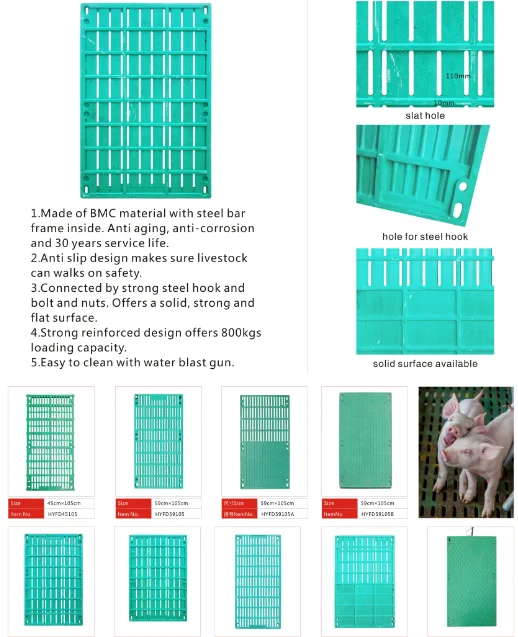chicken transportation cages
Dec . 20, 2024 19:50 Back to list
chicken transportation cages
The Importance of Chicken Transportation Cages
In the poultry industry, the safe and humane transportation of chickens is a critical aspect that directly impacts their welfare and the overall efficiency of the supply chain. Chicken transportation cages play a pivotal role in this process, ensuring that birds are moved safely and securely from farms to processing facilities or markets. This article explores the design, significance, and best practices associated with chicken transportation cages.
Design Considerations
Transportation cages for chickens are specially designed to meet the needs of both the birds and the transportation process. Typically made from durable materials such as plastic or metal, these cages are constructed to withstand the rigors of transit while providing adequate ventilation and space for the birds. Key design features include
1. Ventilation Proper airflow is crucial to prevent overheating and stress among the birds during transportation. Cages often have slotted openings or mesh sides to facilitate air circulation.
2. Space and Comfort Cages must be spacious enough to allow the chickens to stand, turn, and rest comfortably. Overcrowding can lead to stress and injury, making it important to adhere to industry standards regarding the number of birds per cage.
3. Accessibility For easy loading and unloading, many cages feature doors that open wide. This design minimizes stress on the chickens and speeds up the transportation process.
4. Safety and Security Cages must be secure to prevent escape and to protect the chickens from outside elements. Strong latches and robust materials ensure that the contents remain safe throughout the journey.
Significance of Proper Transportation
The welfare of chickens during transportation is paramount. Stressful conditions, such as excessive heat, overcrowding, or rough handling, can lead to serious health issues and even fatalities. This concern has led to stricter regulations regarding animal welfare during transport, emphasizing the need for humane practices.
chicken transportation cages

Transporting chickens in appropriate cages significantly reduces the risk of injury and stress. It facilitates healthier environments, which can result in better meat quality and less post-transport loss. Moreover, the careful handling of chickens during transit can foster a more sustainable poultry supply chain by minimizing mortality rates and ensuring that birds arrive at their destination in good health.
Best Practices for Chicken Transportation
To enhance the effectiveness of chicken transportation cages, several best practices should be followed
1. Pre-Transport Preparation Before loading, it's essential to check that all cages are clean and in good condition. Any sharp edges or broken components can harm the birds.
2. Appropriate Loading Techniques Staff should be trained in humane handling techniques to minimize stress during loading. Gentle lifting and careful placement in the cages help in maintaining calm among the birds.
3. Environmental Controls During transport, temperature and humidity should be monitored. Vehicles should be equipped with ventilation systems to keep the air fresh and cool for the birds.
4. Post-Transport Care Upon arrival, chickens should be unloaded calmly and promptly. This reduces stress and allows for a smoother transition to the next stage of their journey.
5. Regular Inspections and Upgrades Transportation cages should be regularly inspected for wear and tear, with necessary upgrades made to meet evolving welfare standards and regulations.
Conclusion
Chicken transportation cages are more than just containers; they are vital tools that ensure the safe and humane transport of poultry. By focusing on design, implementing best practices, and maintaining high welfare standards, the poultry industry can greatly improve the conditions for chickens during transport. This not only benefits the animals but also enhances the overall efficiency and reputation of poultry producers in a competitive market. As consumers become more aware of animal welfare issues, investing in quality transportation solutions will likely become even more important for poultry businesses striving for success.
-
Automatic Feeding Line System-Pan Feeder Nipple Drinker|Anping County Yize Metal Products Co., Ltd.
NewsJul.29,2025
-
Hot Sale 24 & 18 Door Rabbit Cages - Premium Breeding Solutions
NewsJul.25,2025
-
Automatic Feeding Line System Pan Feeder Nipple Drinker - Anping County Yize Metal Products Co., Ltd.
NewsJul.21,2025
-
Automatic Feeding Line System Pan Feeder Nipple Drinker - Anping County Yize Metal Products Co., Ltd.
NewsJul.21,2025
-
Automatic Feeding Line System - Anping Yize | Precision & Nipple
NewsJul.21,2025
-
Automatic Feeding Line System - Anping Yize | Precision & Nipple
NewsJul.21,2025






